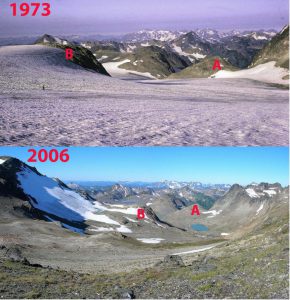
Looking down the North Branch of Whitechuck Glacier in 1973 and 2006. This was a good ski up until the early 1990’s and then was bare ground by 2003.
FEBRUARY 17, 2013
Death of a Glacier, Whitechuck Glacier, Washington
Posted by Mauri Pelto
The Whitechuck Glacier supplies flow to the headwaters of the Whitechuck River. Its white expanse has graced these headwaters for thousands of years. The Whitechuck Glacier retreated slowly from its advanced Little Ice Age position until 1930, while rapidly thinning. Thus, prepared it began a rapid retreat in 1930. This rapid retreat culminated in the total disappearance of the north branch of the glacier in 2001. No more does this glacier dominate the headwaters, and its demise has and will continue to alter the hydrology of the Whitechuck River headwaters.
A comparison of glacier surface elevation in 1983 and 2002 identifies the average thinning in the twenty year period from the USGS aerial photography in 1983 to 2002, for the northern branch is 15 m. For the southern branch the average thinning is 6 m. The total area of glacier ice left including the stagnant section by the northern terminus is 0.9 km2 less than 30% of the area of just 30 years ago. At the current rate of thinning and given the current ice thickness of 35 m this glacier will endure for the first half of this century.
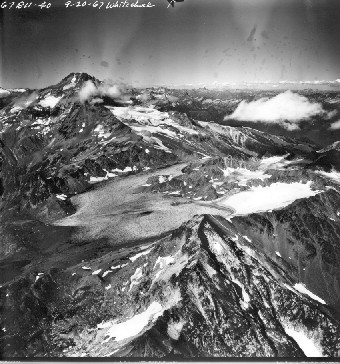
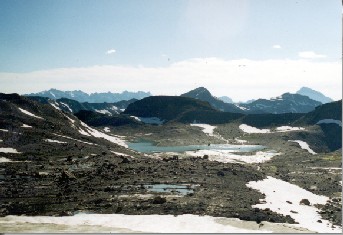
Whitechuck Glacier Terminus in 1994 looking west across basin deglaciated since 1940.
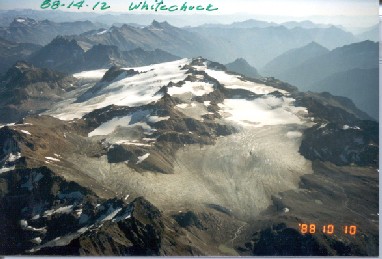
Whitechuck Glacier in 1988
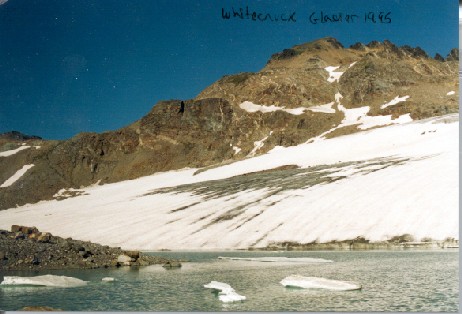
Whitechuck Glacier terminus in 1995 ending in new lake formed since 1984.
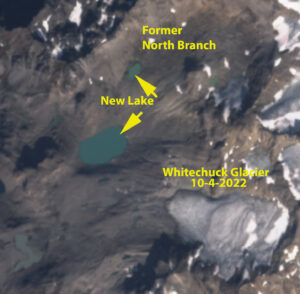
Sentinel view of White Chuck Glacier in 2022. Illustrating retreat from the lake it terminated
